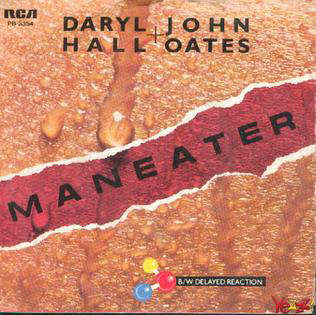Fitness Advice with Dr. Diane Cooper
Dr. Diane Cooper from True Fitness in Portarlington joined Will Faulkner on the Midlands Today Show to chat about physical activity and health. Here's some of the simple and practical tips she discussed:
Exercise, Joint Health and Arthritis
Dr. Diane Cooper has been speaking to Will about the role of exercise in promoting good joint health, particularly as we age, and also the role of different types of exercise in the treatment and management of arthritis.
Diane has created a short workshop video* outlining some of the causes of arthritis, the development of arthritis, and the specific roles that flexibility, range of motion, strength, balance and aerobic exercise have on the treatment and management of arthritis. This is covered in the context of the “Training Triangle” for arthritis.
The workshop is supported by some simple and practical videos that you can do at home to improve your joint health.
Here's a warm up, mobility, strength and balance routine for beginners:
Impact of sedentary behaviour and cocooning on our health:
The research that is available to date on the effects of cocooning for the early months of 2020 show evidence for decreased muscle size, strength and function, decreased cardiovascular fitness, decreased metabolic and cardiovascular health, decreased mental health and decreased quality of life for our friends and family who were in this very difficult situation. Unfortunately, these consequences were to be expected based on what we already know about the detrimental impact of physical inactivity on our physical and mental health.
The good news is even small amounts of physical activity are very effective in reversing this process. We don’t have control over the restrictions, or the path of this virus in the immediate future, but we absolutely do have control over our own actions in terms of physical activity behaviour and the positive impact this has on our health. I hope this short blog with accompanying video is helpful to you at this time.
Join us in our “step challenge” this month to reduce your sedentary time!
Step 1: Assess how active you currently are by counting your steps every day for one week.
The first thing you need to do is quantify how active you are. The simplest way to do this is by counting your steps. You will need some technology to help you do this and some of the options you might like to use include the following.
- A pedometer: This is a little step counting device that you clip on to your hip and can be purchased online. This is the old way we used to count steps before the fit bit and smart phone technology caught up. Some people like these because there is no complicated technology involved. The pedometers are great for counting steps, but you may not like the inconvenience of wearing this device on your trouser belt.
- A Fit Bit: A Fit Bit is basically a watch that your wear on your wrist and it is capable of counting steps. You can buy these anywhere online. There are lots of different models of Fit Bit. For step counting all you need the most basic/cheapest model. It shouldn’t need to connect to computers, you shouldn’t need to use a computer at all unless you love technology and want to download and work with your data. You can simply see the number of steps you have taken in a day by looking at the display screen on your watch. If you want to track your steps the old-fashioned way, you can simply write down this figure at the end of the day. Your Fit Bit should automatically reset at the start of each waking day.
- A step counting app on your smart phone: You can download any free step counting app on your smart phone and it will count your steps. This is convenient because most of us carry phones with us everywhere we go. You need to be mindful that you must have your phone in your pocket for it to count your steps, so while this is free, it might be a slight inconvenience.
Step 2: Determine if you are currently (i) sedentary, (ii) somewhat active, or (iii) active.
You are classified as being “sedentary” if you accumulate <5,000 steps per day.
You are classified as being “somewhat active” if you accumulate 5,000-8,000 steps per day.
You are classified as being “active” if you accumulate 10,000 steps per day.
Please note that all of these devices are designed to count steps. They are not designed to assess activities like, gardening, cycling, lifting weights etc. A simple way to translate this information into “steps” is to convert the time you spend doing the activity into steps. Please see a sample table below:
| 10-15 minutes of a moderate intensity activity | 1,000 steps* |
| 15-30 minutes of a moderate intensity activity | 2,000 steps |
| 30-45 minutes of a moderate intensity activity | 3,000 steps |
| 45-60 minutes of a moderate intensity activity | 4,000 steps |
*Please note this is a very rough estimate based on low (15 minute) to moderate (10 minutes) levels of fitness. People with high levels of fitness complete more steps in a shorter time. Your height, leg length, stride length will significantly influence this, so we are just trying to provide you with a generic method of converting “time spent active” to “steps”.
So, for example, if you complete 30 minutes of any moderate intensity activity (e.g. circuit class, cycling etc.), this equates to 3,000 steps and you can add 3,000 steps to your step count for that day. Similarly, if you complete 30 minutes of moderate intensity gardening, you can add 3,000 steps to your step count for that day.
It doesn’t matter where you are at the moment. The log term goal is to reach 10,000 steps per day. That will be easy for some of you but extremely difficult for others. Because this is a blog to the general public, it is a little challenging to give very specific advice. The best way to approach this is to:
- Average your steps per day. So, if your average is 3000 steps per day, for the next 2 weeks try to average 5000 steps per day. This would require you to walk 15 minutes (15minutes = 1,000 steps) at lunch time and 15 minutes (15minutes = 1,000 steps) in the evening. You can of course walk in 5 minute bouts or even 1 minute bouts if you need to.
- For weeks 2-4 try to increase this to 8000 steps per day.
- For weeks 4-6 try to increase this gradually to 10,000 steps per day.
Tips to increase your step count:
- Walk while you talk! If you are having a phone meeting, or indeed just a phone call, stand up and walk around the room as you talk.
- When doing your weekly food shop, park at opposite end of shopping car park in relation to the entrance.
- Take stairs instead of the lift. (if it is safe for you to do so)
- Walk the dog, he/she will love it!
- Bring the kids for 15 minute walk in the evening. Particularly brilliant for them after a heavy day in school.
- Do you have 10 minutes at lunch time to walk?
- Is there a friend / neighbour who is alone and isolated during Level 5 restrictions who would be delighted to have a 15 minute walk in the evening with you (socially distanced of course)
- Could you complete one of our home-based circuit videos? Please find link to one home-based circuit below
Join us in our “strength and balance” challenge this month!
There was a lot of interest in balance training after our show in September on Midlands 103, so we have created this home-based workout video below to help you get started. As mentioned on air, it is very important that you train strength and balance in order to avoid frailty and falls as you age. The reality of frailty and falls is injury, disability, hospital admission, loss of independence and poor quality of life and well-being. Small amounts of strength and balance training can significantly reduce your risk of these issues.
This video is created and presented by John Bolton, our strength and conditioning, and injury and rehabilitation specialist. It contains a full 15 minute warm up at the start of the video followed by some strength exercises and finishing with some balance exercises. This video is appropriate for everyone regardless of your age or ability, but if your strength and balance is currently poor, please perform the exercises with the assistance or a wall, solid heavy chair, or indeed a partner to ensure that you are completely safe and at no risk of falls. Work to your own ability and range of motion.
Flexibility workout:
Balance workout:
Mixed mode (aerobic and resistance training) workout:
Embed not found

